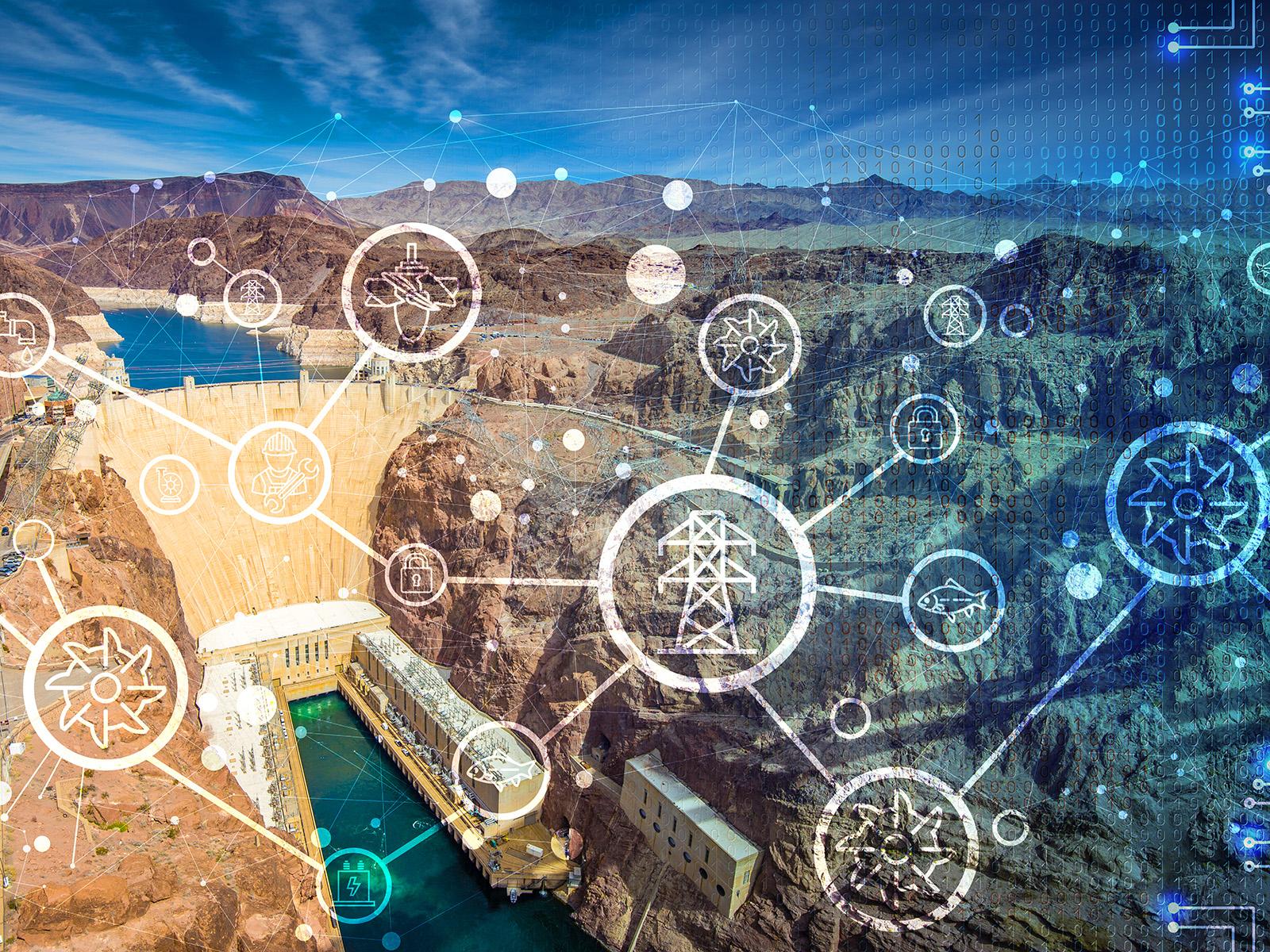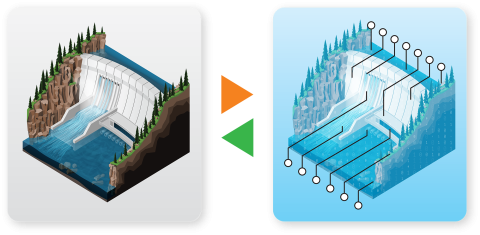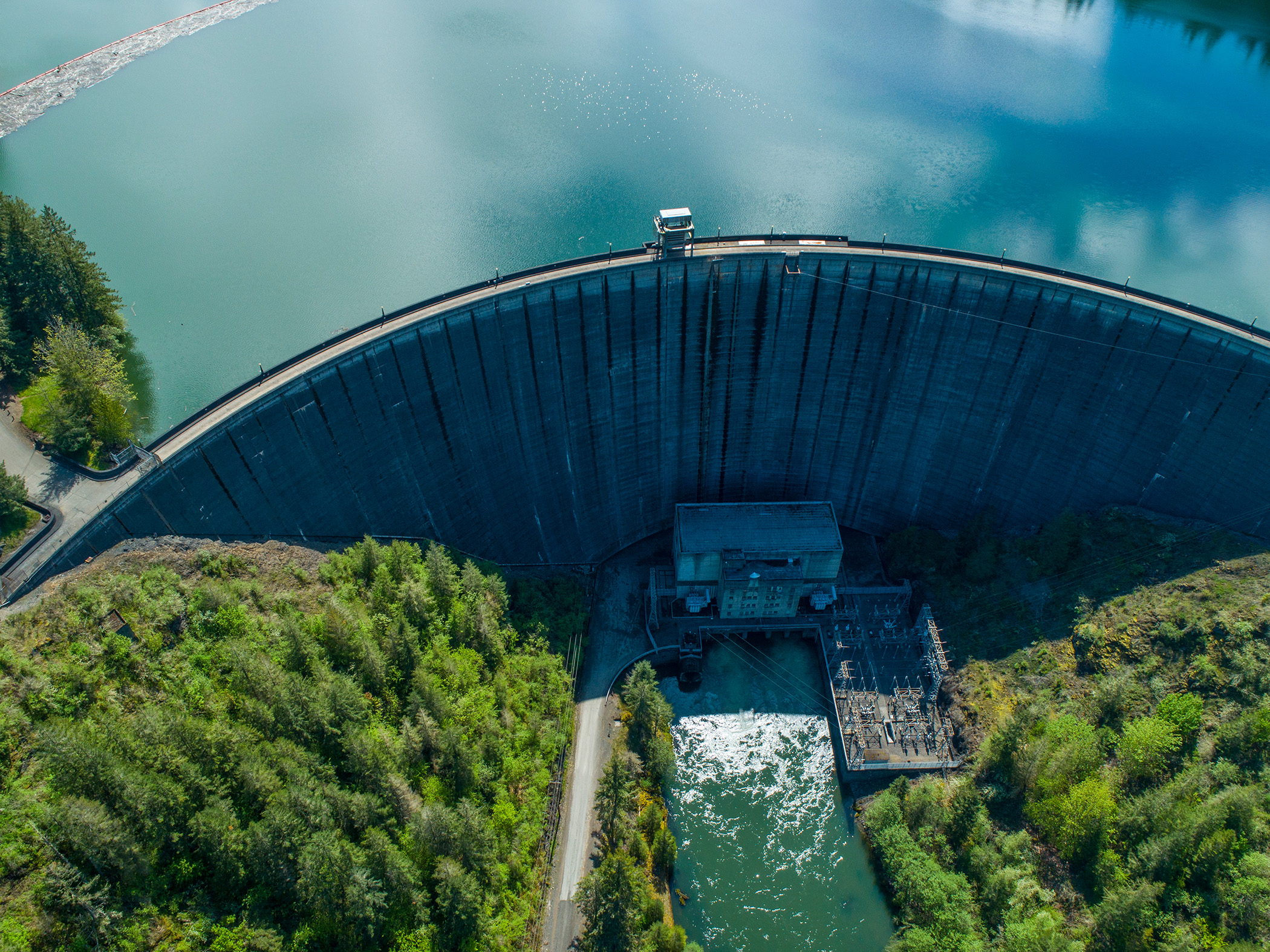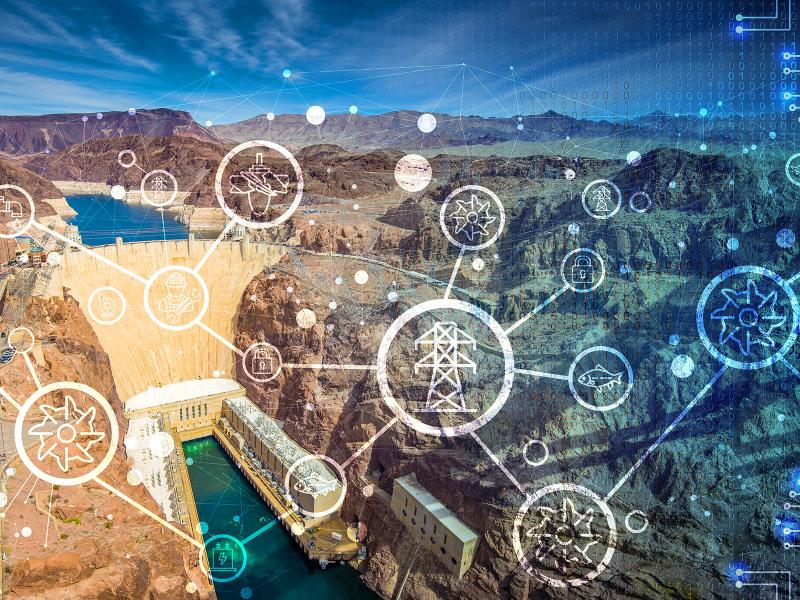
Digital Twins for Hydropower
Digital Twins for Hydropower
The Department of Energy Water Power Technologies Office has developed the Digital Twins for Hydropower framework to create a virtual platform to accelerate technology development for the hydropower industry.

Illustration by Chris DeGraff | Pacific Northwest National Laboratory
Lab-Level Communications Priority Topics
Grid


